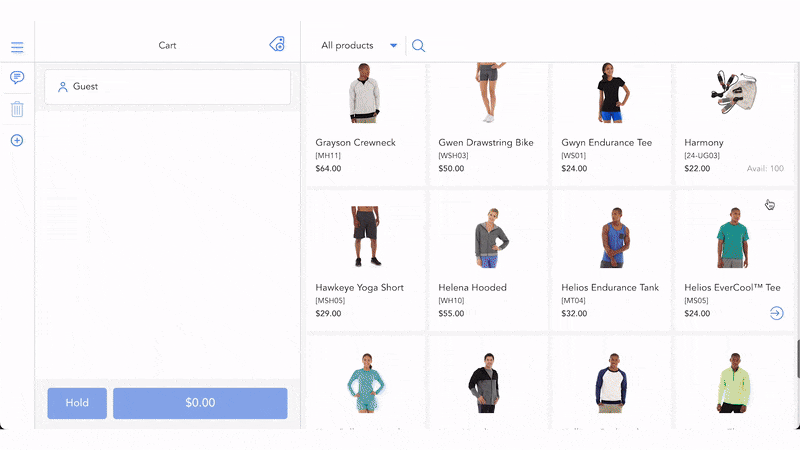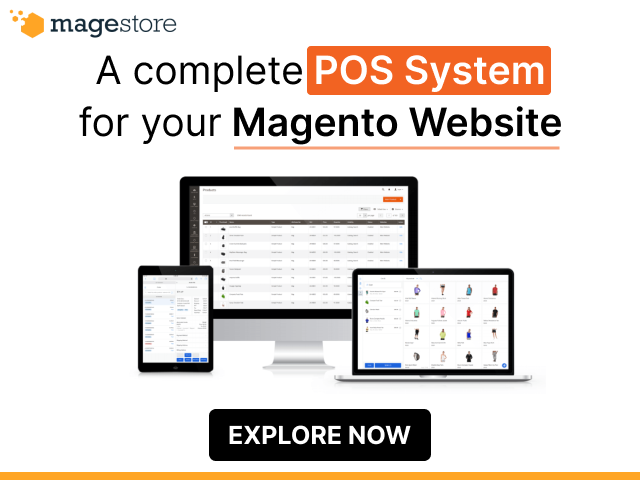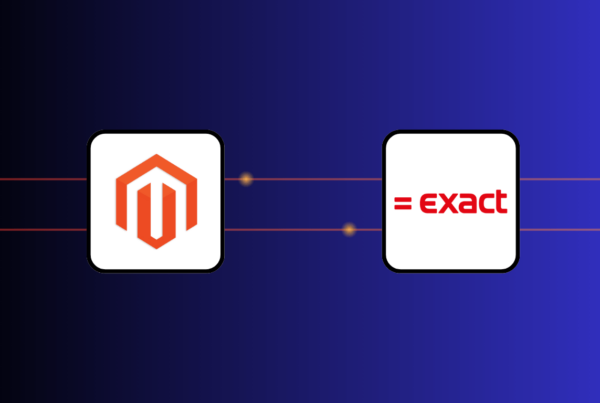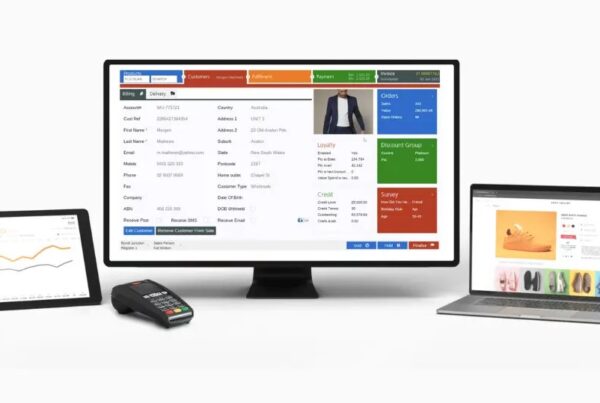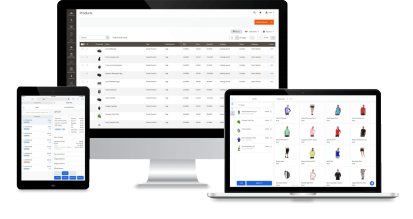Managing your store on Magento and handling backend operations with Oracle ERP? Getting these two systems to work together is one of the biggest headaches for many retailers. Magento Oracle ERP integration can make your life easier, but it also presents real complexities.
These two platforms “speak” different languages, meaning that product catalogs, customer data, and financial information must be accurately mapped and synchronized to avoid data mismatches.
The complexity increases for businesses selling both online and in-store. In these cases, a data flow between Magento and the system handling your in-store transactions is critical for inventory accuracy, timely order fulfillment, and overall customer satisfaction. A connection between Magento and Oracle ERP alone may not be enough to ensure Oracle receives all the data it needs.
This guide will help you integrate Magento with Oracle ERP effectively. We’ll review top connectors on the market and introduce an alternative solution designed to fit the needs of omnichannel retailers.
- Why do you need a Magento Oracle ERP integration?
- 4 ways to integrate Magento 2 with Oracle ERP
- Top 5 Magento Oracle ERP connectors compared: Features, pricing & reviews
- 8 expert tips for a smooth Magento ERP integration module
- A cleaner retail setup for omnichannel retailers: The native solution approach
Why do you need a Magento Oracle ERP integration?
Here’s why connecting Magento with Oracle ERP makes perfect business sense – and the benefits don’t stop there:
1. Real-time data you can trust: Managing data in separate systems is a recipe for mistakes. Oracle Magento integration creates a single source of truth for your business data. When a customer places an order or updates their information, or when inventory levels change, this information flows automatically between systems. Your staff can now devote their energy and time to more beneficial tasks, while the sales team will always have valid and accurate data at hand.
2. Automate your daily operations: How many hours does your team spend on data entry? With integrated systems, these routine tasks happen automatically. Orders flow seamlessly from your online store to your ERP, inventory is updated in real time, and customer information stays synchronized. Not only does this save time, but it also significantly improves accuracy by removing human error.
3. A better customer experience: Today’s customers expect a seamless shopping experience. When Magento and Oracle ERP work together, you can deliver precisely that. Customers see accurate stock levels while shopping and get reliable delivery estimates. For your support team, having a complete customer history at their fingertips means faster, more personalized service. This leads to:
- Fewer “out of stock” disappointments
- More accurate shipping estimates
- Quicker resolution of customer issues
- Seamless returns and refunds

4. Smarter financial control: Integration provides real-time financial insights. Rather than piecing together data from multiple sources, your staff gets real-time visibility into your business performance. They allow better decisions regarding inventory purchases, pricing strategies, and cash flow management.
5. Scale your business the right way: As your business grows, you need systems that can keep up. Magento 2 Oracle Netsuite integration provides a solid foundation so you can manage more orders and add new products without overloading your team. With automated workflows, your operations remain efficient even during peak seasons.
=> You might like: 7 best Magento NetSuite integration to streamline data transfer 2025
4 ways to integrate Magento 2 with Oracle ERP
1. Direct API integration: Building custom connections
Direct API integration using REST and SOAP APIs that Magento supports to integrate with Oracle ERP. Your developers write custom code to make the two systems talk directly.
Unlike third-party connectors, direct API integration allows you to have full control over how data is exchanged between Oracle ERP and Magento. While more flexible, it also requires deeper technical expertise and ongoing maintenance on your part.
Key features
Let’s say a customer orders a red shirt from your Magento store. With direct API integration:
- Real-time order syncing to Oracle ERP
- Automatic inventory updates
- Instant customer confirmation emails
- Automated warehouse packing slips
- All actions completed within seconds
Best for
You’ll love this if:
- Your retail stores handle high data volumes and need fast, precise syncing between Magento and Oracle ERP.
- Your business has unique processes (like custom shipping rules) that pre-built tools can’t handle.
- You have access to developers capable of working with both Magento and Oracle APIs, either in-house or through an agency.
- You want full control over how data flows between the 2 systems – including orders, inventory, customer records, and pricing.
- You are prepared to handle maintenance, errors, and security yourself.
Pros | Cons |
|
|
2. Third-party connectors: Pre-built solutions
Pre-built connectors act as specialized bridges between Magento and Oracle ERP. They provide standardized integration capabilities with minimal setup requirements.
A third-party developer has already developed the connection logic between Magento and Oracle ERP, so you only need to configure settings rather than build everything from scratch.
Key features
- Reduced development time and faster time-to-market
- User-friendly interfaces — You get a dashboard where you can choose what to sync
- Core features work out of the box, though complex workflows may need additional configuration
- Some connectors offer basic setup through no-code interfaces, but advanced configurations may still require developer involvement
- Regular updates and support from the vendor
Best for
This is perfect if:
- You manage moderate data volumes (e.g., hundreds of orders or SKUs daily)
- Your business follows standard eCommerce processes
- You want to get up and running quickly
- You prefer a subscription-based pricing model or predictable ongoing costs
Pros | Cons |
|
|
3. Middleware solutions: The modern approach
Middleware platforms serve as intermediary systems that facilitate data exchange between Magento and Oracle. They typically use APIs and can support additional methods like EDI or configurable connectors, depending on the platform.
But unlike connectors, middleware platforms don’t create simple 1-to-1 connections. They act as central hubs that manage and orchestrate data flows across Magento, Oracle ERP, and other integrated systems — such as CRM, POS systems, or shipping solutions.
Key features
- Visual workflow designers (Orders can flow from Magento → Oracle → Shipping software)
- Customer data can sync between Magento → CRM → Oracle
- You can add new connections without rebuilding everything
- Some provide a visual interface to monitor and resolve issues (e.g., drag-and-drop workflows or dashboards)
Best for
Consider this if:
- You deal with high data volumes (e.g., thousands of transactions across channels) and need to integrate Magento 2 with Oracle ERP, as well as additional systems (e.g., CRM, POS, shipping tools)
- Businesses with complex, unique operations, regardless of financial size
- You plan to add more systems in the future
- You want something that can scale up
=> Read more: POS vs ERP: Analyze 5 key differences and one bonus point
Pros | Cons |
|
|
4. Custom Development: Building from scratch
Custom development is about building a connection totally from the ground up. It’s made just for your business — like hiring architects to design something perfect for you. Every part fits your exact needs.
Key Features
- Data moves precisely how you want it.
- Special inventory rules (like holding stock for VIP customers)
- Custom pricing logic between systems
- Integration with your unique business processes
- Custom reports and dashboards on business performance (e.g., sales, inventory, order trends) derived from Magento and Oracle ERP data
Best for
This makes sense if:
- Your retail businesses process very high data volumes (e.g., tens of thousands of orders or complex datasets daily) and have highly specialized needs (e.g., unique pricing logic, custom inventory rules)
- Standard solutions don’t meet your needs
- You can spend on ongoing development.
Pros | Cons |
|
|
How to choose the best Magento Oracle ERP integration for your business
Picking the right way to connect Magento and Oracle ERP depends on what your business needs.
- First, Retailers can start by asking a few simple questions. What data do you want to share between the systems? For some, it’s just orders, but others might need inventory or customer details, too. Bigger data demands could push you toward custom builds or middleware.
- Next, how fast you need updates. If you’re a busy store, real-time syncs keep overselling at bay — Direct Magento eCommerce API or Middleware might work best. For smaller setups, updating once a day could be enough, and a Third-party Connector would do the trick. Budget matters, too. Connectors come with steady monthly fees ($500-$2,000), while custom solutions cost more upfront ($30,000+)
- Consider your team size. A small crew might struggle to maintain a custom system, but Middleware’s easy-to-use tools can help mid-sized teams manage things smoothly.
- Lastly, think about your sales channel complexity: Now, if you sell both online and in physical stores, it gets a bit more complicated. Omnichannel businesses deal with scattered data — like web sales and in-store returns.
You may need to pull all your data into Magento first (say, with a native POS) and then sync it to Oracle ERP. Want to know more about this idea? Check out Section 5 for a smart solution built for omnichannel retailers.
Top 5 Magento Oracle ERP connectors compared: Features, pricing & reviews
Solution & Type | Key features | Prerequisites | Pricing | Pros | Cons | Customer rating |
Elogic commerce Magento Oracle ERP connector | Middleware | Custom development | Third-party connectors |
|
|
|
|
| 5/5 on G2 |
i95Dev Magento ERP integration | Integration Expertise as a Service — IEaaS |
|
| Contact for details |
|
| 5/5 on Clutch |
Codeless BPA Platform for Adobe ERP Oracle integration | iPaaS |
|
|
|
|
| 3.9/5 on G2 |
DCKAP Magento Oracle Integrator | Middleware/iPaaS |
|
|
|
|
| 4.6/5 on G2 |
Cleo Integration Cloud | Middleware/iPaaS |
|
| Contact for a quote |
|
| 4.6/5 on Capterra |
8 expert tips for a smooth Magento ERP integration module
Connecting Magento Oracle ERP eCommerce can really change how your retail business runs. But to make it work smoothly, Magento merchants need to plan carefully and do it right. Based on the key points from the content, here are 8 simple tips to help you get Magento ERP software that fits your business perfectly.

1. Set clear rules for data flow
Before you start, figure out how data like stock levels, customer info, and orders will move between Magento and Oracle ERP. For example, you can decide if an order in Magento should update Oracle’s inventory right away or if updates once a day are okay. It keeps your data consistent and reliable.
2. Handle multi-channel sales smartly
If you sell online, in stores, and on marketplaces, we’re sure that things get trickier. Your Magento Oracle ERP for eCommerce needs to pull data from all these places and keep it in sync without messes or gaps. As a result, retailers need to carefully pick a solution that can manage this well so nothing gets lost or mixed up.
3. Only use real-time updates when it matters
If your business needs the latest info to avoid selling stuff you don’t have, choose real-time syncing. If timing isn’t as critical, 3rd-party connectors with batch updates can save you effort.
4. Make it fit your special needs
Your business might do things its way, such as offering unique pricing or reserving stock for VIPs. Custom development or flexible middleware can be shaped to match those needs. Some pre-built options, like Codeless BPA, might not be as adjustable.
5. Plan for growth early on
As your business gets bigger, you’ll need to handle more data. Middleware like Cleo’s Magento Oracle ERP cloud or custom setups can grow with you and manage more orders or new sales channels easily. Skip basic connectors if you expect fast growth, they might not keep up.
6. Count on good vendor help
Having a vendor you can rely on is a game-changer. Something like i95Dev’s IEaaS offers fast support and setup in under 30 days. But if support is slow, it could hold you back. Therefore, it’s a must to check customer reviews on G2, Capterra, or Clutch to see what others say.
7. Keep data secure and compliant
The 7th tip is to protect your customers’ info and payment data during the integration. Middleware tools like DCKAP let you monitor data flows and encryption to secure it in transit.
8. Start simple, then build-up
Don’t try to do everything at once. Begin with the basics — like syncing orders — and add more features as you go. This helps you spot issues early and tweak things without stress.
A cleaner retail setup for omnichannel retailers: The native solution approach
As you can see, these five ERP Magento connector-based integrations do a good job, but they also come with downsides.
- Businesses often have to deal with multiple connection points, such as the ERP, Magento, and a 3rd-party Magento ERP connector.
- On top of that, switching systems and connectors can be a real hassle and waste of time, which can lead to potential synchronization delays between systems.
- The licensing costs that come with it just add more headaches to something that should be straightforward.
So, if you’re looking to sidestep the steep costs of 3rd-party Magento Oracle ERP integrations, which can climb into thousands of dollars monthly? A Magento-native POS offers a streamlined, budget-friendly alternative by cutting out connector fees entirely. Here’s how POS works between Magento & Oracle ERP and why it’s better than the usual setup.
Case 1: If you use Oracle ERP modules with Magento and have an offline stores
This means you’re using Oracle retail management software and selling both online through Magento and in actual stores. A Magento native POS system can save you a lot of trouble.
What’s the plan?
- Get a Magestore Magento-native POS to pull together data from your online and offline sales. This makes sure everything matches upright.
- Then, send that clean data from Magento to Oracle ERP in real time.
Why it’s awesome:
- Straight connection: You don’t need a separate connector between Magento and the POS. That saves you money right off the bat.
- Fewer mistakes: With fewer data sync issues, inventory discrepancies, order processing errors, etc, to manage, there’s less chance of things going wrong.
- Safer data storage: Your info doesn’t hop through tons of tools, so it stays more secure.
- Fast help: With Magento native POS, you’re only working with two companies, Magento and Oracle, instead of an extra 3rd-party module. When tech problems pop up, there’s no back-and-forth blame game between a bunch of vendors. You won’t get stuck with the connector folks blaming Magento, Magento pointing at Oracle, and Oracle passing it back to the connector.
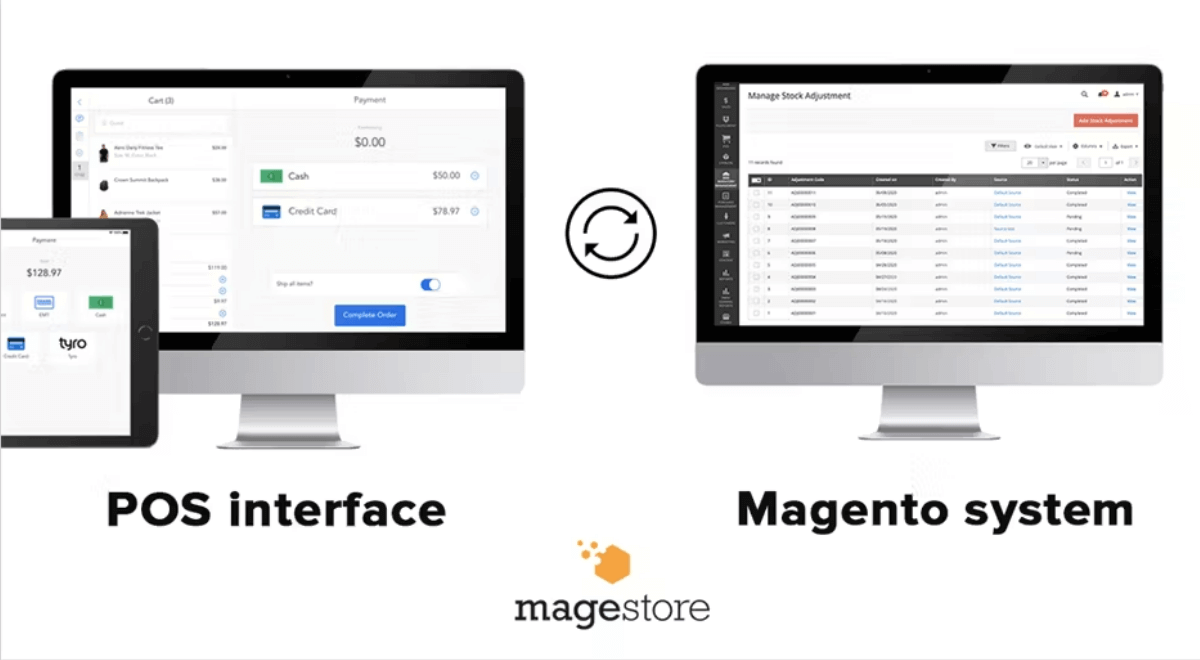
Why Standalone POS isn’t ideal for Oracle ERP and Magento omnichannel retail
A standalone POS might sound good for in-store sales, but it’s not the best pick for retailers using Oracle ERP and Magento to run an omnichannel setup. Furthermore, Oracle ERP is great for behind-the-scenes stuff like financials, supply chain, and reporting. It wasn’t designed to deliver specialized front-end retail experiences.
This leaves a gap that needs a well-connected POS solution. Instead of using a standalone POS that works on its own, retailers do better with a Magento-native POS system. It ties together online and offline operations without any hiccups. Going the standalone route brings some big downsides that hit both how smoothly things run and how happy customers are:
- Without native integration, a standalone POS may not sync inventory in real time with Magento, leading to overselling online or stockouts in-store.
- As your business grows, retailers need to add new stores or channels — a standalone POS requires more integrations, each needing maintenance and potentially custom code. This increases the total cost of ownership, especially for features like loyalty points or payment reconciliation.
- Beyond initial costs, standalone POS often needs 3rd-party connectors to sync with Magento and Oracle ERP. Of course, it adds recurring fees monthly.
We know many businesses using Oracle Fusion who needed extras like payment tracking, barcodes, and pickup options. A standalone POS couldn’t keep up without costing a fortune. And here’s a quick look at the difference:
What’s different | Magento-Native POS + Oracle ERP | Standalone POS + Oracle ERP |
Works with Magento | Fit right in, no extra tools | Need a connector, more money |
Changing it up | Easy with Magento’s setup | Hard and pricey to tweak |
Cost | One-time POS cost + Magento/Oracle licensing | POS monthly cos + 3rd connector between Magento and ERP + Magento/Oracle licensingMore touchpoints raise breach risks |
Data security | Secure within the Magento ecosystem, fewer handoffs | More touchpoints raise breach risks |
Store features | Made for retail, it works great | Not as good, less flexible. It might require add-ons or custom work |
Support efficiency | Faster thanks to fewer vendors, direct Magestore support | Slower, have to coordinate POS, Magento, connector, and ERP teams |
Case 2: If you want to manage Magento and physical stores without Oracle ERP
If you’re a retailer selling online with Magento and in brick-and-mortar stores but don’t want to use Oracle ERP, you might think about 3rd-party connectors to link everything up. But those can bring extra costs and headaches you don’t need.
A Magento-native ERP is a better, simpler choice. It keeps all your operations inside the Magento platform, making it easy to manage both online and offline channels. Below, we’ll look at why connectors don’t cut it, the perks of sticking with a native option, and how Magestore’s Magento-native ERP solution does the job — no connectors needed.
Problems with connectors:
- They’re not cheap — think $500 to $5,000 a month.
- They take time to set up and might not fit your unique needs.
- Data can get slow or messy if the link isn’t perfect.
- You’re stuck waiting on the connector folks for fixes or updates.
Why a Magento-Native ERP is a lifesaver in such cases:
- No go-between: Magestore POS connects straight to Magento, so data moves fast and cleanly.
- All-in-one: Handles POS, stock, orders, purchasing, reports, and staff all together.
- Easy setup: Plugs into Magento without extra software.
- Reasonable price: Pay once, not over and over.
Check out Magestore POS solution:
For retailers skipping Oracle ERP, Magestore offers an ERP solution native to Magento that covers everything: POS, robust inventory, order handling, purchasing, comprehensive reports, and employee management. No connectors needed, no stress. It’s made to work smoothly for online and offline sales, keeping things simple and under your control.
Here’s a fast peek at Magestore’s native setup versus Magento with Oracle ERP and a 3rd connector:
What’s different | Magestore Magento-native POS | Magento + Oracle ERP + Connector |
Connection | Straight to Magento, no fuss | Due to indirect integration. It needs a connector, more steps |
Data sync speed | Real-time sync happens instantly within Magento. It ensures online and offline data align without delays. | Sync speed might vary — connectors can lag (minutes to hours). It risks inventory mismatches across channels. |
Cost | Pay once, save money in the long term | Monthly fees ($500-$5,000) + setup |
Growth | Grows easily with Magento | Stuck if the connector can’t keep up. Scaling requires additional connectors or ERP upgrades, increasing costs and integration efforts as you grow. You might face connector limitations with increased transaction volume. |
Support efficiency | Single-vendor support from Magestore resolves issues fast. | Multi-vendor coordination (Magento, Oracle, connector provider) slows support, with potential finger-pointing delays. |
Wrapping up: Picking the best Magento Oracle ERP integration for you in 2025
After going through all the info about hooking up Magento with Oracle ERP, one thing’s for sure — it’s not the same for everyone. Our guide has laid out why you’d want to do it, the different ways to pull it off, and some top tools to help. Whether you’re a small shop making $1 million a year or a bigger business with $10 million, what works depends on your money, your team, and how you sell.
Why bother with integration? It gives you data you can count on, saves your team from boring manual work, and keeps customers happy with the right stock info and quick help. Plus, it clears up your money picture and helps you grow without everything falling apart.
But how do you get there? That’s the tricky part. You’ve got four choices:
Direct Magento API integration if you want total control, 3rd-party connectors for a fast start, middleware if you need wiggle room, or custom builds for something made just for you. Each has good stuff: quick setup or flexibility, and not-so-good stuff — like high costs or extra steps.
We also checked out five big-name connectors: Elogic, i95Dev, Codeless BPA, DCKAP, and Cleo. They all bring something to the table. Elogic gives you three ways to connect: i95Dev sets up fast and works worldwide, Codeless BPA is easy on the wallet, DCKAP has user-friendly dashboards, and Cleo’s is simple with cloud access. But they’ve got downsides, too. Retailers should think about monthly fees, learning curves, or not enough custom options. Choosing one means figuring out what your business needs now and down the road.
Then there’s a special idea for folks selling online and in stores — a Magento native solution like Magestore’s POS. It skips the connector hassle completely. You gather all your data in Magento first, then send it to Oracle ERP or skip Oracle and go all-in with a Magento-native ERP. It costs less in the long run, it’s easier to handle, and it keeps your data safe. Compared to connectors, it’s less of a headache and grows with you, especially if you want things like no overselling or pickup options. So, how do you figure out what’s best? Start with some simple questions from the guide.
- What do you need to sync: orders, stock, customer details?
- How fast do you need it: right away or once a day?
- What’s your budget: can you pay $30,000 upfront or stick to $500 a month?
- And your team: can they handle a custom setup, or do they need something ready to go?
- If you’re selling online and in stores, really think about that native POS idea — it could save you cash and stress.
In the end, the best Magento Oracle ERP setup isn’t the fanciest or cheapest. It’s the one that fits your company. Whether you build it yourself, grab a connector, or go Magento native for Oracle ERP, this guide gives you what you need to choose smart. What’s next? Sit down, list what you need, chat with your team, and pick a way to keep your retail business rocking in 2025 and beyond.

